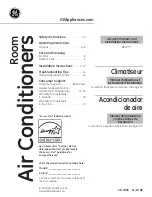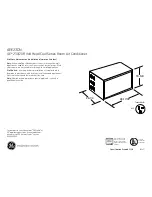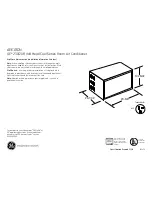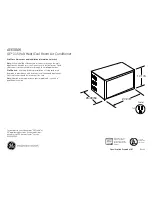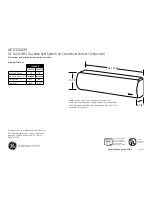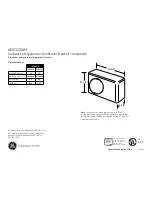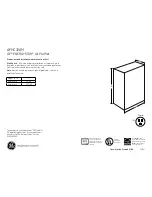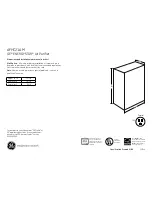
Page 26 of 80
9.5 Hot Gas Reheat Lineset Piping Installation
Locate the hot gas reheat connection line(s) (factory
installed) at the indoor unit. Locate the hot gas reheat
circuit connection in the condensing unit. The hot gas
reheat valve and solenoid is factory installed.
Size the piping between the evaporator and condenser for
a minimum pressure drop. See Table 3 for recommended
line size.
The piping should be free draining to the evaporator
connection to ensure oil return to the compressor.
Connect the piping with clean, dehydrated refrigerant
grade tubing. Use standard industry practices to install
the refrigerant line.
9.6 Leak Testing and Evacuation
Charge system with R-410A trace gas and dry nitrogen.
Pressurize to 150 PSIG.
Check inside unit, and interconnecting piping with
suitable leak detector. Relieve testing charge and connect
a good vacuum pump to the gauge connections.
Do not open any other valves at this time. Connect a
micron gauge to the vacuum pump. A deep vacuum of at
least 500 microns is required.
Wait 15 minutes, if there is no rise on the micron gauge
the system is sealed.
9.7 Additional Piping Considerations
9.7.1 Leaks
Leaks occur at incorrectly made joints. Very small
scratches or particles of dirt in a joint can cause a
refrigerant leak. The leak may be so small that it is difficult
to detect on a Halide leak detector. Leaks can develop
even years after the joint is made unless flux and solder
specifically developed for refrigerant work are used. Any
improper made joint will cause trouble in time, as it will
eventually leak enough refrigerant to reduce capacity of
the system.
9.7.2 Moisture
Moisture in the refrigeration system will combine with
fluorine in the refrigerant and form hydrofluoric acid
which will corrode and pit the system. Hydrofluoric
acid also decomposes the compressor lubrication
oil causing sludge. Great care should be exercised in
keeping moisture out of the refrigeration system when
installing tubing, because an extremely small amount
can cause trouble. For this reason, except on large sizes,
only refrigeration grade, seamless annealed, sealed
copper tubing should be used. This tubing is available
at refrigeration supply stores and has been dehydrated,
cleaned inside and sealed at each end. Exposure of the
inside of the tubing to the atmosphere must be kept to
minimum. Do not use tubing that has been exposed.
9.7.3 Dirt
Dirt and metal chips must be kept out of the refrigeration
system, since they will accumulate at strainers and clog
them, restricting the flow of refrigerant.
Equivalent Length in Feet of Pipe for Valves and Fittings
Tubing
Size:
O.D.
Short
Radius
Elbow
Long
Radius
Elbow
Tee Line
Tee
Branch
Angle
Valve
1/2
1.6
1.0
1.0
3.1
8.3
5/8
1.9
1.2
1.2
3.6
10.4
3/4
2.1
1.4
1.4
4.2
12.5
7/8
2.4
1.6
1.6
4.8
14.6
1-1/8
3.0
2.0
2.0
6.0
18.8
1-3/8
3.6
2.4
2.4
7.2
22.9
1-5/8
4.2
2.8
2.8
8.4
27.1
2-1/8
5.3
3.5
3.6
10.7
35.4
Table 4: Equivalent Lengths of
Fittings and Valves
RC/FC Series Installation, Operation, and Maintenance Manual


































